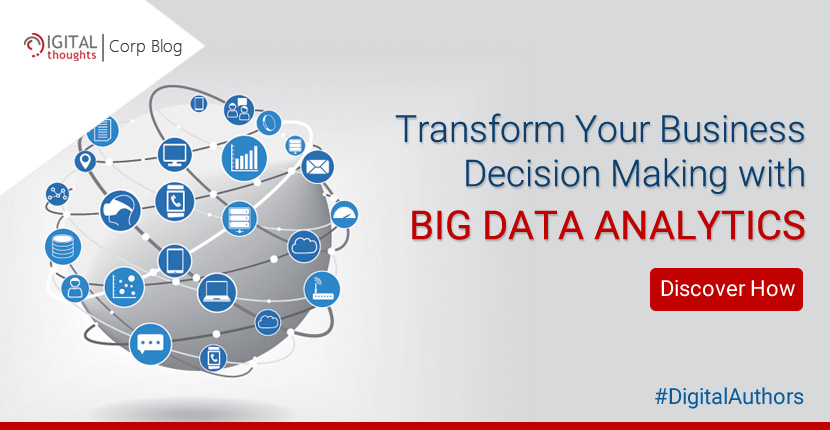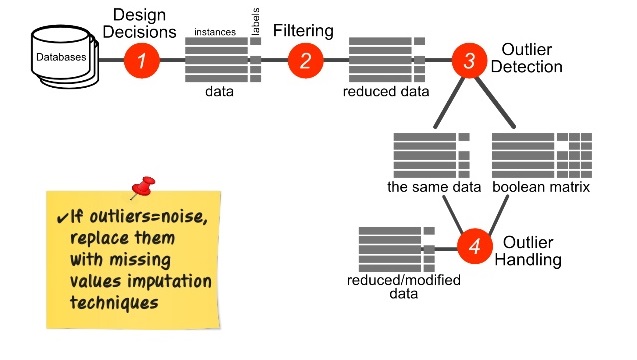Big Data Analytics Can Transform Your Business Decision Making

According to Forbes, the spending on Big Data technology will reach $57 billion this year!
What does this interesting statistic signify? Well, it simply means that globally, organizations are gearing up to spend more on technology that helps them analyze and make sense of the immense volumes of organizational data. Add to it the fact that 6 million developers worldwide are working on advanced Big Data Analytics, and you’ll realize that it is one of the most sought after technologies in the world today. So, what makes Big Data analytics so popular and how does it hold the potential to transform your business?

Source: https://bit.ly/2ESLVyP
Big Data is a very important source of valuable insights that organizations can use for informed decision making and in formulating strategic moves to fuel business growth. The technology that allows businesses to leverage the potential of Big Data is termed as Big Data Analytics.
What is Big Data Analytics
Big Data Analytics is defined as the process of analyzing Big Data to look for and identify hidden patterns, entities, semantic similarity and other insights. In other words, it examines data to derive its meaning, determines what the data is all about and also extracts information that is hidden within such large volumes of data. The data that organizations possess is mostly unstructured data which makes it impossible to analyze it manually without the help of “intelligent” technology. Modern enterprise search platforms are powered with the technology to analyze Big Data. 3RDi Search, developed by The Digital Group, is one such comprehensive enterprise search platform.
How Big Data Analytics Works
In order to understand how the technology of Big Data analytics works, we need to take a closer look at the stages of the process and what happens at each stage.
Even before you start with the actual process of collecting data, there is a very important step which is identification of the objectives your business wants to achieve through the entire analytics process. This stage should be all about defining the results you expect and it is crucial because it will serve as the benchmark to help you determine whether the project is heading in the right direction. Knowing where to go always makes the journey easier and also makes it possible to identify errors and issues early on. This stage is where you should define the performance metrics to measure the success of the project.
Once you have your goals in place, next comes the compilation of data which is the most important stage. This stage requires you to focus on collecting as much relevant data as possible, from more and more sources. This is because more the data you manage to collect about your users, the better the positon you’re in to derive important insights about their behavior. One thing that you must keep in mind while compiling this data, is your objectives. The efforts that you put in must be in alignment with your objectives if you want to see results.

Source: https://bit.ly/2OVTyJl
So, you have compiled all the relevant data. What next? Well, the next step involves refining this data to prepare it for the data analytics process. During this stage, you need to go through the data to determine what’s important and relevant and what needs to be discarded. Categorization or sorting the data into relevant categories is also carried out during this stage. If you take the right approach, you should be left with the most relevant data by the end of this stage.
Once the stage of preparing the data is done with, we move to the next stage which involves application of the actual tools and methods for data analytics. By the time this stage is reached, your data will be ready. This stage involves application of the tools and methods for analyzing the data. The tools and methods you choose depend on the objectives of your project.
The last and final stage of the data analytics process, this stage involves execution with the help of the tools and methods you have selected in the previous stage. It is at this stage that you get to see the results and understand how well your data analytics strategy has performed. Also, it is important to note that this stage is not something that you just conduct once. It is a continuous process which you may have to repeat as you go on making improvements.

Source: https://bit.ly/2FXomWk
Now that we’re aware of how Big Data Analytics works, let’s have a quick look at the benefits.
- Allows your business to gather insights from a wide variety of data collected from various different sources, including databases, social media, external sites, emails, and more.
- Makes it possible for your business to track and monitor trends in real time.
- Gives you the insights required to sort the relevant data for easy access.
- Offers your business the valuable insights required for informed decision making.
- Provides your business with insights required to mitigate risks.
- Gives you the power to leverage data-driven marketing to its maximum potential.
- Allows your business the privilege to understand the behavior of users.
- Allows you to create a personalized experience for your users, based on their behavior, which boosts brand loyalty.
The Final Word
